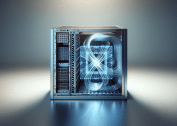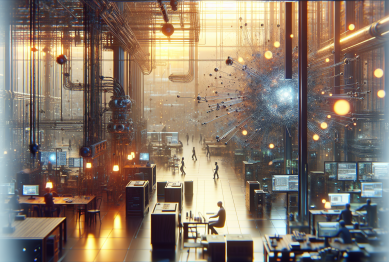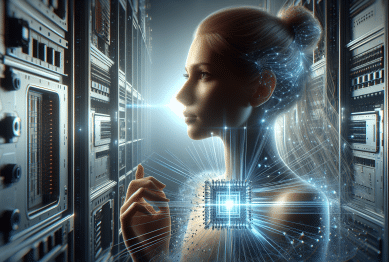Explore the transformational potential of AI-powered robots and how they’re entering workplaces, homes, and everyday routines. This article uncovers the ways artificial intelligence, robotics, automation, and machine learning are reshaping daily life, sparking curiosity about their current impact and future possibilities.
AI-Powered Robots: Stepping Into Everyday Life
Artificial intelligence has greatly advanced robotics. Robots are no longer limited to industrial assembly lines; they’re becoming part of common spaces. This rise is due to deep learning techniques, real-time data processing, and adaptive algorithms. AI-powered robots are deliberately designed to learn from the environment, adapt to changes, and interact with people in ways that closely mimic human presence. Modern smart homes may feature service robots that help with cleaning, security, or even making basic recommendations based on data from previous activities. These innovations are not confined to luxury or experimental spaces. Gradually, more accessible models turn futuristic tech into a tangible aspect of daily routines, catering to a wider audience. The trend speaks to how rapidly the cost and complexity barriers are coming down.
One striking example is the integration of collaborative robots—often referred to as cobots—within both office environments and homes. Cobots are engineered to work alongside humans, handling repetitive or hazardous tasks while improving workplace safety and efficiency. In healthcare, AI-powered robots now assist with medication management, transporting supplies, and even certain surgical procedures. Such applications blend automation with high-precision AI, pushing productivity and safety standards higher. The combination of cloud robotics and advanced sensors enables rapid updates and the sharing of best practices through connected networks, further democratizing access to smart automation and making it adaptable for small businesses, clinics, and even personal households.
For many, the presence of AI in daily life still feels novel. Yet, adoption rates are climbing as people get used to robotic assistants in kitchens or offices. Early concerns about reliability are melting away due to improvements in natural language processing and contextual awareness. Voice-enabled home assistants, for example, now use machine learning to better predict user needs, resulting in smoother interactions with limited instruction. The growing familiarity sparks interest in how these AI-powered robots could eventually expand into education, caregiving, and urban infrastructure. The sense of novelty fades as convenience and subtle support become the new normal.
Understanding Automation and Its Influence
Automation, traditionally tied to heavy industry, is reaching new domains—ranging from logistics to grocery delivery—powered by intelligent robotics and AI. This wave of innovation isn’t just about replacing manual effort but augmenting human capability. Autonomous vehicles used in supply chains, for instance, utilize real-time sensors, computer vision, and machine learning to map routes, avoid obstacles, and deliver goods more efficiently. Businesses large and small are leveraging robotic process automation to handle repetitive digital tasks, freeing human workers to focus on decision-making and creative solutions. As automated systems become smarter, companies find fresh avenues to scale operations, reduce error rates, and optimize performance.
The appeal of automation extends to everyday conveniences as well. Smart vacuum robots, lawn-mowing bots, and automated kitchen helpers are now available at prices more households can afford. They operate by combining cloud computing, environmental mapping, and AI models to adapt to ever-changing layouts and schedules. For consumers, this means less time on routine chores and more time for activities that require uniquely human skills. As robotics platforms become more open and customizable, individual users are finding creative new applications—such as using robotic arms for home workshops or telepresence robots to connect with distant relatives. The blend of robotics and automation personalizes the technology, making it responsive to different lifestyles and needs.
Automation’s spread into society raises important questions about the future of work. Concerns persist about technology displacing jobs, but research highlights new roles emerging in data analysis, robot maintenance, and AI training. Educational institutions and online platforms have started offering specialized courses in robotic programming and automation management so the labor force can reskill and adapt. This shift emphasizes that the most successful outcomes occur when people and machines collaborate—each amplifying the other’s strengths. Automation isn’t just displacing old ways; it’s inspiring new industries, services, and even sources of creativity and satisfaction in modern society.
The Growing Role of Machine Learning in Robotics
Machine learning enables robots to do more than repeat programmed tasks. Through exposure to varied data, robots can learn to identify objects, understand speech, and even track emotional cues in human interactions. In some hospitals, machine learning guides autonomous robots in delivering medicines along routes optimized for both speed and safety. Retailers use it to enhance security surveillance, product restocking, and customer greeting—all in real time. This flexibility, rooted in neural networks and pattern recognition, sets the scene for robots that continue to improve long after deployment, adapting to unique environments and unpredictable challenges.
Reinforcement learning, a subset of machine learning, allows robots to practice trial and error efficiently. Physical bots can now learn to sort recyclable materials by shape and composition, train in real-world kitchens to prepare simple meals, or dynamically improve their ability to catch objects on the fly. These advances rely on large-scale data collection, cloud-based analysis, and continual updates. With such learning capabilities, robots become more robust, requiring less hands-on intervention after installation. Machine learning also makes personalization possible, as service robots tailor their responses to individual preferences and household routines over time.
Crucially, advances in machine learning are making collaborative robots safer and more trustworthy. By combining vision systems with AI, robots can better anticipate unexpected human actions, reducing the risk of accidents in shared spaces. In fact, safety standards are now evolving to include benchmarks for human-robot interaction. This allows industries from manufacturing to healthcare to welcome more sophisticated autonomous solutions. The relationship between humans and robots benefits from constant feedback and incremental learning, paving the way for new levels of trust and cooperation.
AI and Robotics in Healthcare Advancements
Few fields have experienced the transformative influence of AI-powered robotics as deeply as healthcare. Robots powered by artificial intelligence are now used for critical tasks such as assisting surgeons with minimally invasive operations, disinfecting hospital rooms using ultraviolet light, and providing physical therapy support to patients in rehabilitation. These systems improve outcomes by ensuring accuracy, reducing errors, and lowering costs associated with lengthy hospital stays. In diagnostic imaging, AI-driven robots process and interpret scans far faster than before, detecting abnormalities with greater precision. This blend of technology, accuracy, and repeatability is changing how practitioners approach patient care.
Beyond hospitals, mobile health robots with AI capabilities are helping manage outbreaks and care in remote or understaffed areas. Telehealth robots facilitate remote consultations, using cameras, sensors, and secure connections to bridge gaps between patients and providers who can be thousands of miles apart. Their deployment reduces exposure to contagions, speeds emergency responses, and supports elderly populations wishing to age in place. The ability to gather and interpret patient data in real time is enabling more personalized, proactive care models, from monitoring chronic illnesses to delivering medication reminders and check-in calls. AI’s reach in healthcare shows that robots can become trusted partners, not just tools.
Robotic process automation plays a key role in healthcare administration too. Hospitals deploy AI software robots to manage scheduling, billing, supply chain logistics, and compliance checks, cutting down on manual paperwork. Such innovations allow medical staff to dedicate their attention to patients rather than routine administrative burdens. As technology becomes more integrated, questions of data privacy, training for staff, and clear policy guidelines are growing in importance. Health agencies, research organizations, and regulators are moving quickly to ensure safety, reliability, and responsible use in both public and private healthcare settings, highlighting the necessity of ethical AI deployment as robots gain vital new roles.
Emerging Home and Lifestyle Robots
Home robots, once a fantasy, now offer a variety of functions—cleaning, security, tutoring, and personal companion services, all powered by AI and automation. Robot vacuum cleaners map rooms, avoid obstacles, and respond to voice instructions, while smart kitchen helpers track inventory, recommend recipes, and even preheat ovens. Security robots, integrated with home Wi-Fi and mobile apps, provide real-time alerts and monitor for unusual activity. Unlike the first generation of devices, today’s home robots learn preferences through frequent interaction, adjusting schedules or techniques to optimize for specific family routines.
Beyond chores, lifestyle robots enhance comfort and quality of life. Robot pets bring companionship and stimulation to individuals who cannot care for real animals. Educational bots use AI models to help children with homework, language learning, or STEM activities in playful, engaging ways. For individuals with mobility challenges, robotic exoskeletons and wheelchairs increase independence and enable safer movement throughout living spaces. The integration of AI ensures these robots can adjust tone, pace, or even humor to match user needs, making them adaptable companions rather than inflexible gadgets.
Advances in connectivity, voice recognition, and environmental mapping enable home robots to blend into daily life more seamlessly than ever. Wi-Fi cloud updates mean new features are delivered overnight, expanding capabilities over time. With the rapid evolution of user interfaces and the addition of customizable options, people can tailor robot assistants for entertainment, health tracking, daily scheduling, or even remote home management. As these innovations mature, the vision of interconnected smart homes run by responsive, AI-powered robots comes closer to reality, making lifestyle enhancement more accessible.
AI-Robotics and the Future of Work
The ongoing integration of AI-powered robots into workplaces is redefining job roles, work processes, and business models. In warehouses, robots handle packaging, sorting, and transferring goods, guided by AI algorithms that maximize space and delivery speed. In offices, workflow automation bots manage emails, bookkeeping, and scheduling. These changes prompt businesses to rethink organizational structures and invest in upskilling workers, so people can collaborate with, rather than compete against, machines. Many experts suggest future workplaces will balance human creativity and empathy with automated efficiency.
This new landscape calls for strong digital literacy. Workers are encouraged to enhance their knowledge of robotics, machine learning, and artificial intelligence fundamentals. Employers are increasingly offering learning opportunities focused on data science, programming, and systems analysis. As robots handle baseline tasks, people are empowered to take on strategic, social, and technical challenges that require human judgment. The shift creates opportunities for remote work, flexible hours, and digitally connected teams. Organizations that embrace the evolving partnership between AI, robotics, and human ingenuity are best positioned to thrive in the fast-changing economy.
Of course, the transition involves societal and ethical considerations. Questions about privacy, labor equity, data security, and the role of humans in a robot-assisted world will continue to spark healthy debate. Governments and regulatory bodies are beginning to establish frameworks to guide responsible development and deployment of AI-powered robots. With careful planning, transparent policies, and ongoing education, society can shape a future where both people and advanced machines reach their full potential—together.
References
1. U.S. National Science Foundation. (n.d.). The Future of Robotics and Artificial Intelligence. Retrieved from https://www.nsf.gov/news/special_reports/robotics/
2. World Economic Forum. (n.d.). The Role of AI in Shaping the Future of Work. Retrieved from https://www.weforum.org/agenda/2020/10/future-of-work-artificial-intelligence/
3. National Institutes of Health. (2020). The Use of Artificial Intelligence in Health Care. Retrieved from https://www.nih.gov/news-events/nih-research-matters/use-artificial-intelligence-health-care
4. International Federation of Robotics. (n.d.). Service Robots in Personal and Domestic Use. Retrieved from https://ifr.org/robots-in-daily-life/service-robots-personal-domestic-use/
5. MIT Computer Science & Artificial Intelligence Laboratory. (n.d.). Machine Learning and Robotics Research. Retrieved from https://www.csail.mit.edu/research/machine-learning-robotics
6. United Nations Educational, Scientific and Cultural Organization (UNESCO). (2021). Ethics of Artificial Intelligence. Retrieved from https://en.unesco.org/artificial-intelligence/ethics









